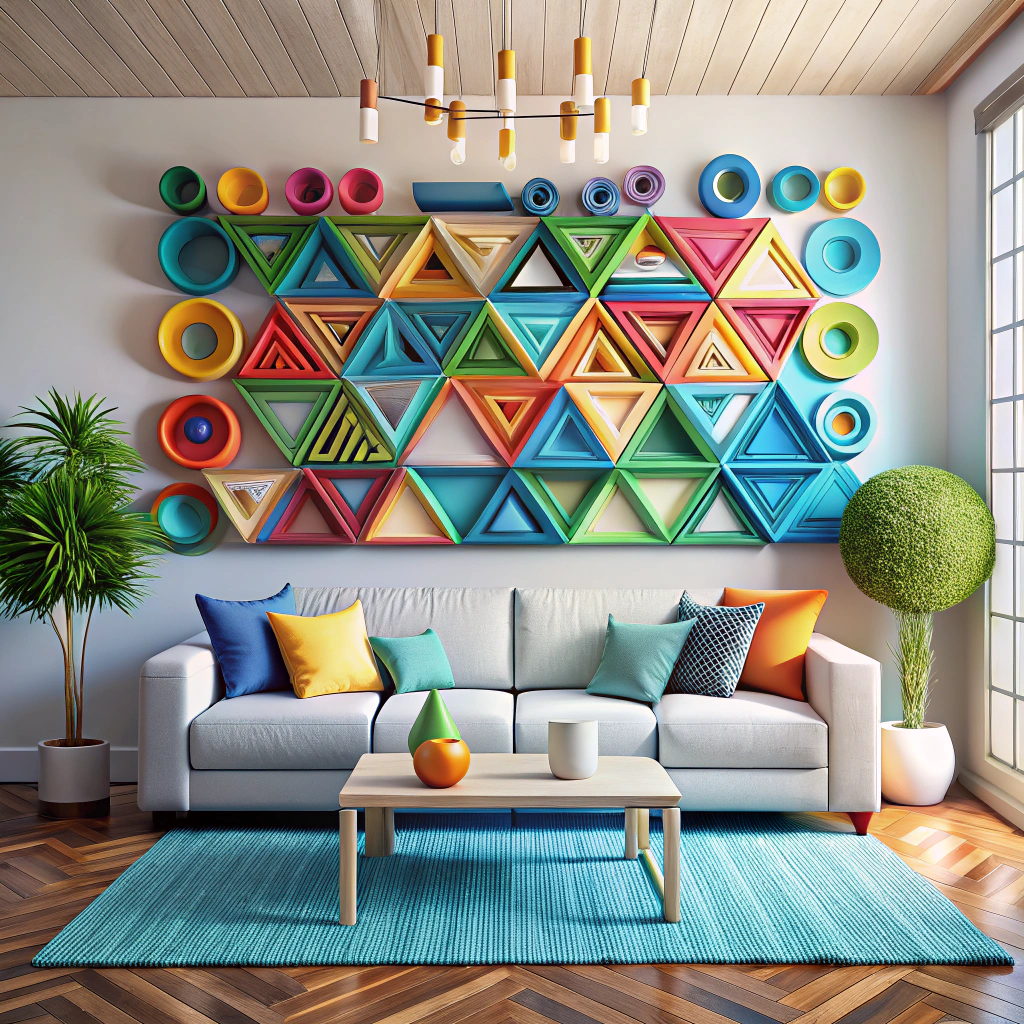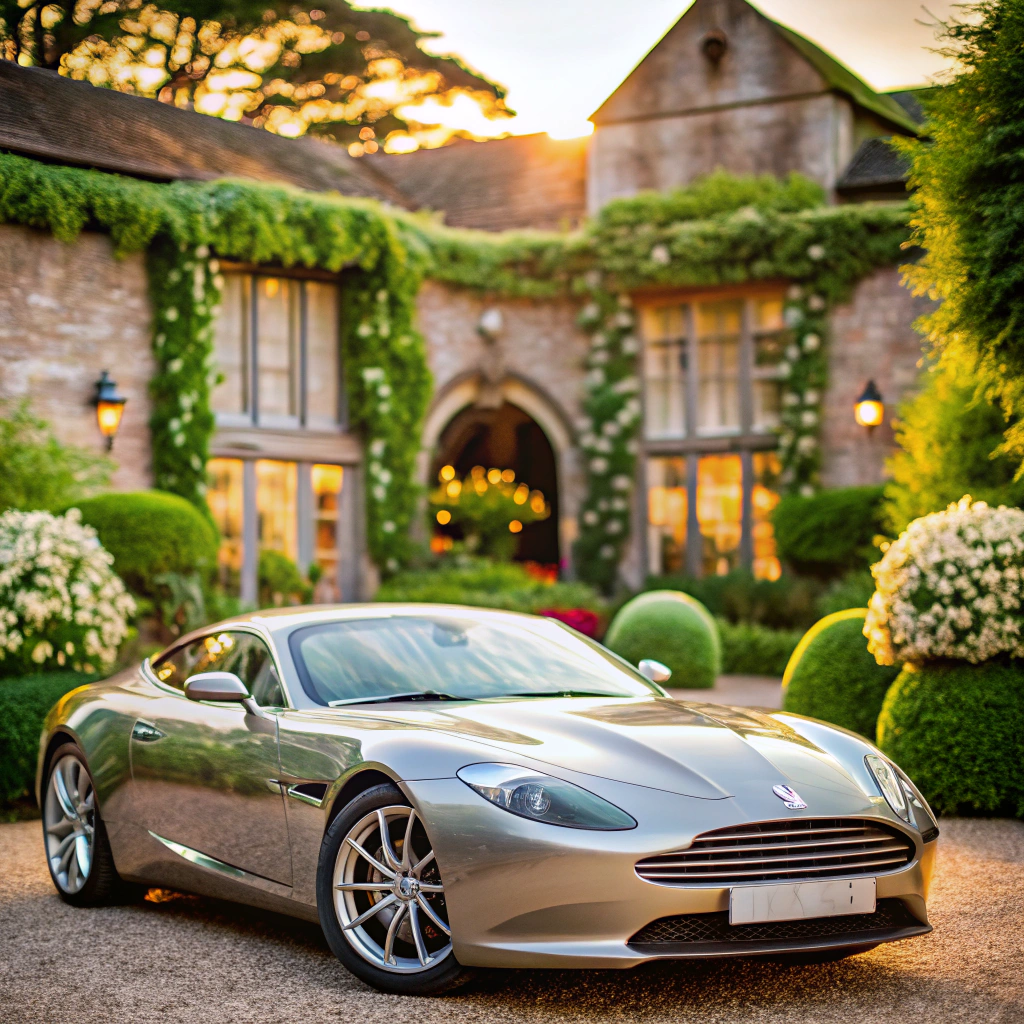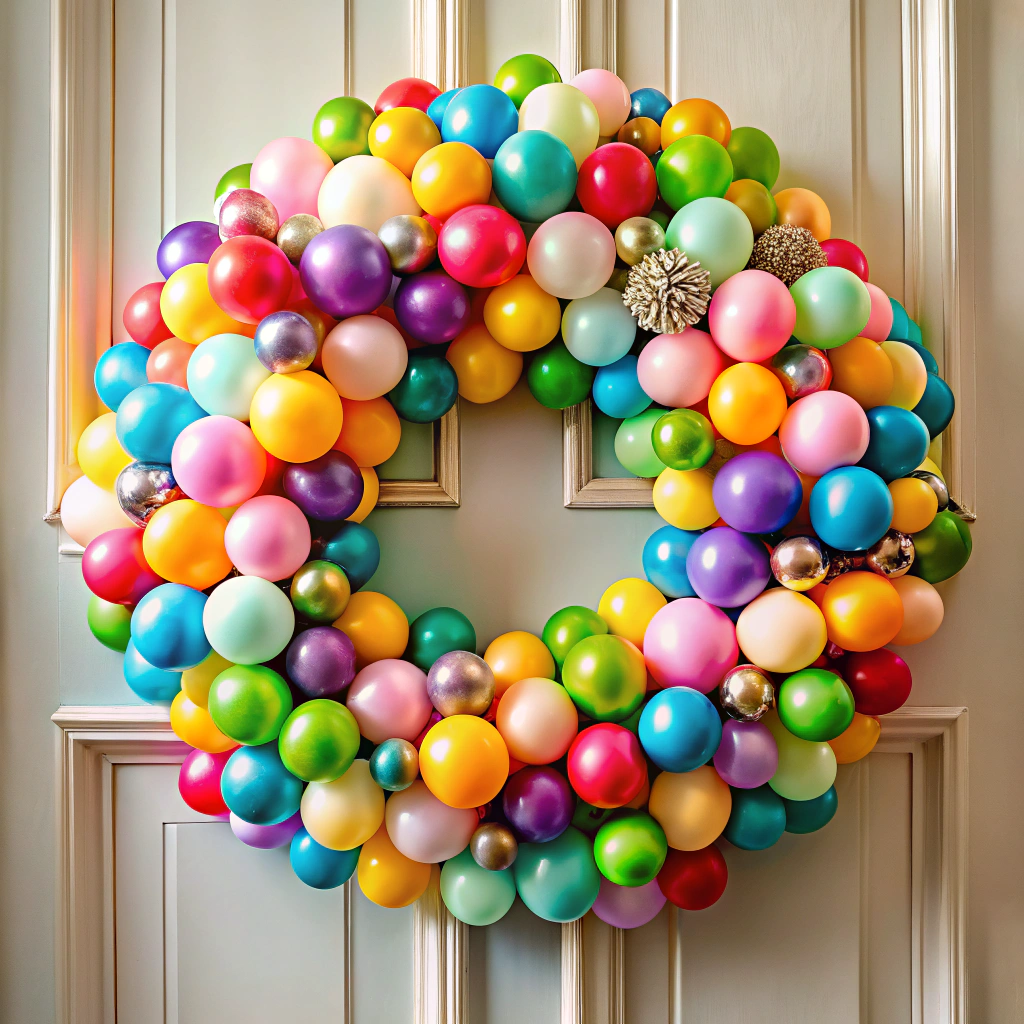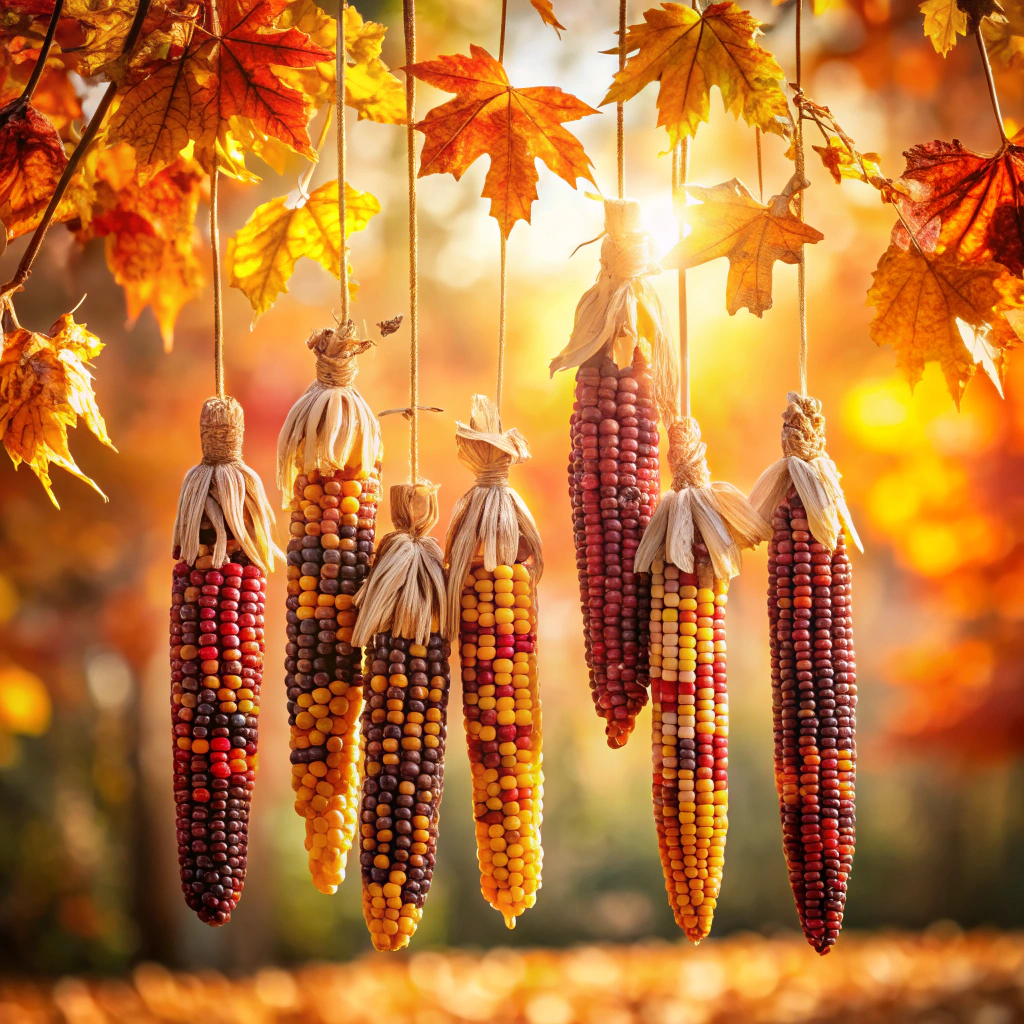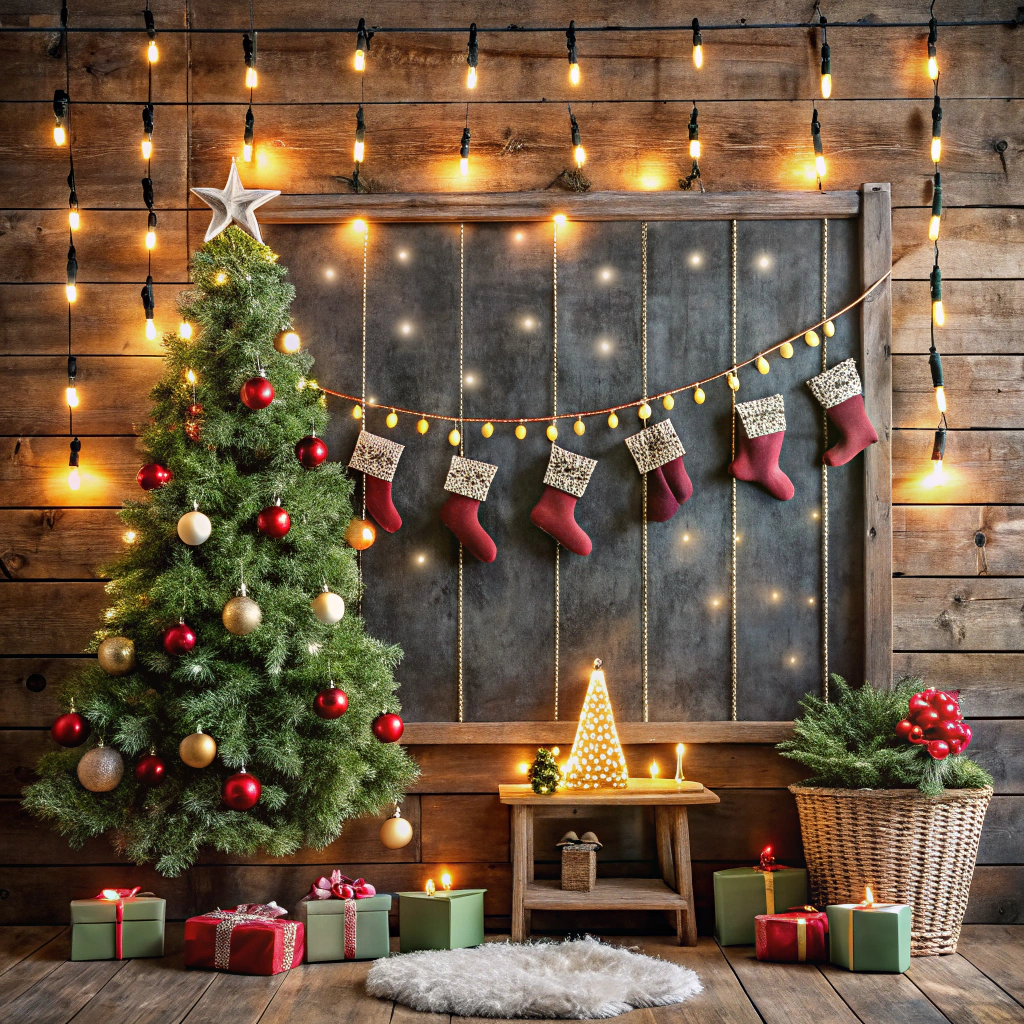Last updated on
Diving directly into the comparison of milk paint versus chalk paint, this article will offer decisive insight into their distinct attributes, uses, and advantages to help you choose the ideal paint for your next project.
Key takeaways:
- Milk paint: raw wood, antique/distressed look, eco-friendly
- Chalk paint: versatile, minimal prep, matte finish, vintage aesthetic
- Both paints: low VOCs, quick drying time, suitable for indoor use
- Milk paint colors: vibrant, earthy, translucent, rustic appearance
- Chalk paint colors: muted, pastel, consistent, covering imperfections easily
Chalk Paint Vs Milk Paint Formulations
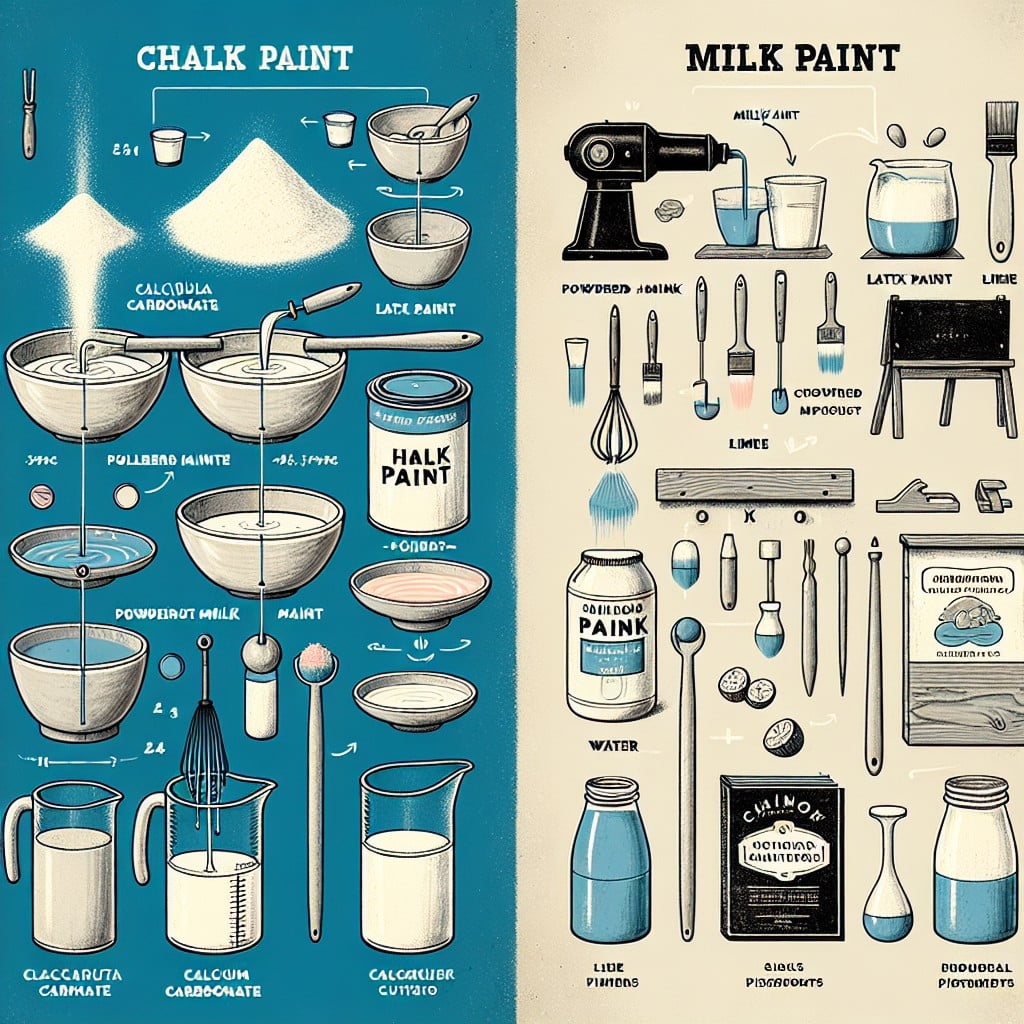
Diving into the distinctions between these popular paint types, it’s essential to understand their unique ingredients. Chalk paint boasts a calcium carbonate base, giving it that signature velvety finish. Easy to mix and apply, it typically requires no primer and adheres to surfaces without sanding, streamlining the paint process.
In contrast, milk paint‘s ancient formula combines natural ingredients like casein (milk protein), limestone, clay, and natural pigments. It delivers an eco-friendly profile, complete with a powdery consistency that must be mixed with water before use. This traditional mixture results in a paint that’s renowned for its organic look and ability to chip and flake in a way that’s desirable for some antique and distressed furniture styles.
Milk Paint Vs Chalk Paint Suitability
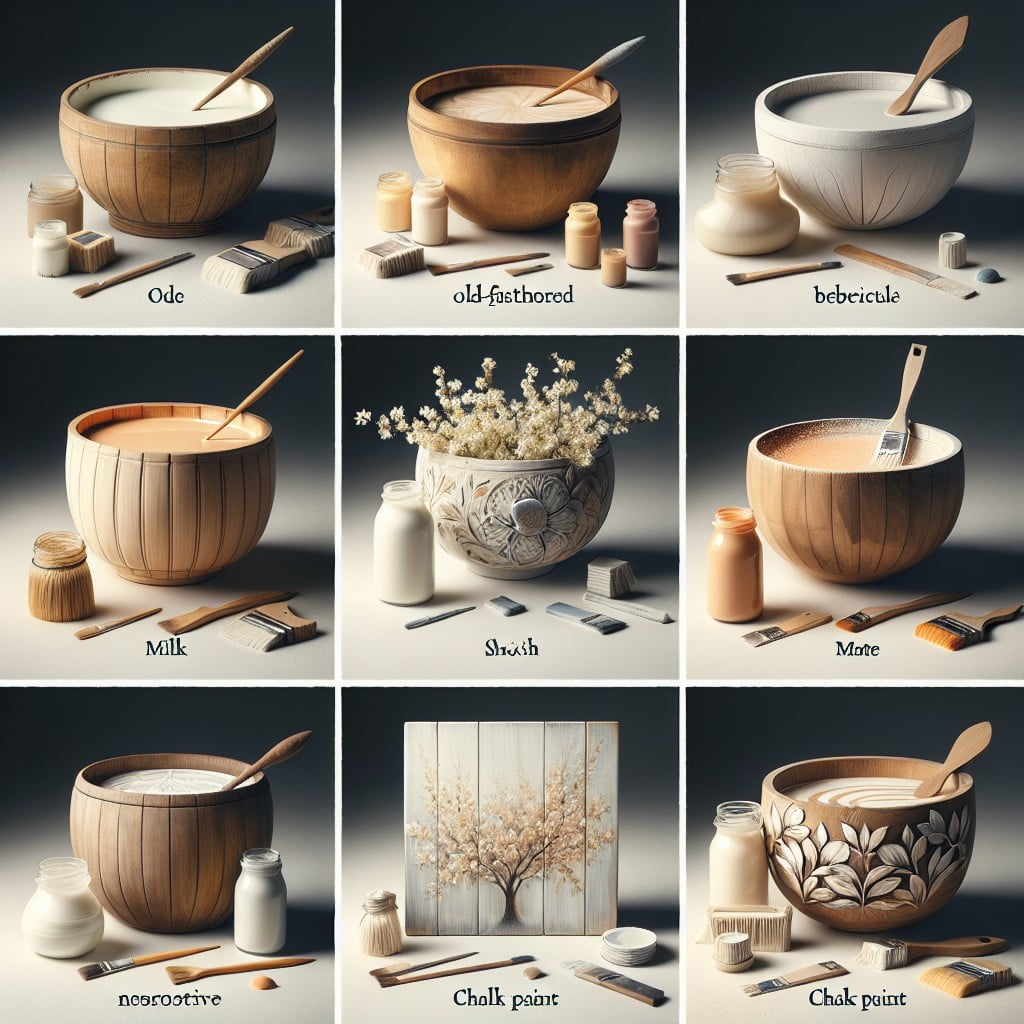
Milk paint offers a unique choice for those interested in an antique or distressed look. Ideal for raw wood surfaces, it penetrates the material, providing a long-lasting finish that is less likely to chip or peel. Surfaces that already have a finish, however, will require a bonding agent to ensure the paint adheres effectively.
Chalk paint, on the other hand, excels in versatility, adhering to most surfaces without the need for extensive preparation, such as sanding or priming. Its thick consistency allows for easy coverage, making it a go-to for furniture pieces, cabinets, and decorative items. Notably, its matte finish can also be easily distressed, perfect for creating a vintage aesthetic with minimal effort.
Both paints are generally low in volatile organic compounds (VOCs), which makes them a safer choice for indoor projects. However, milk paint comes in a powder form that must be mixed with water, lending it the additional advantage of a longer shelf life when stored properly. Chalk paint is ready to use out of the can, which for many, translates to convenience and time saved.
Chalk Paint Vs Milk Paint Application
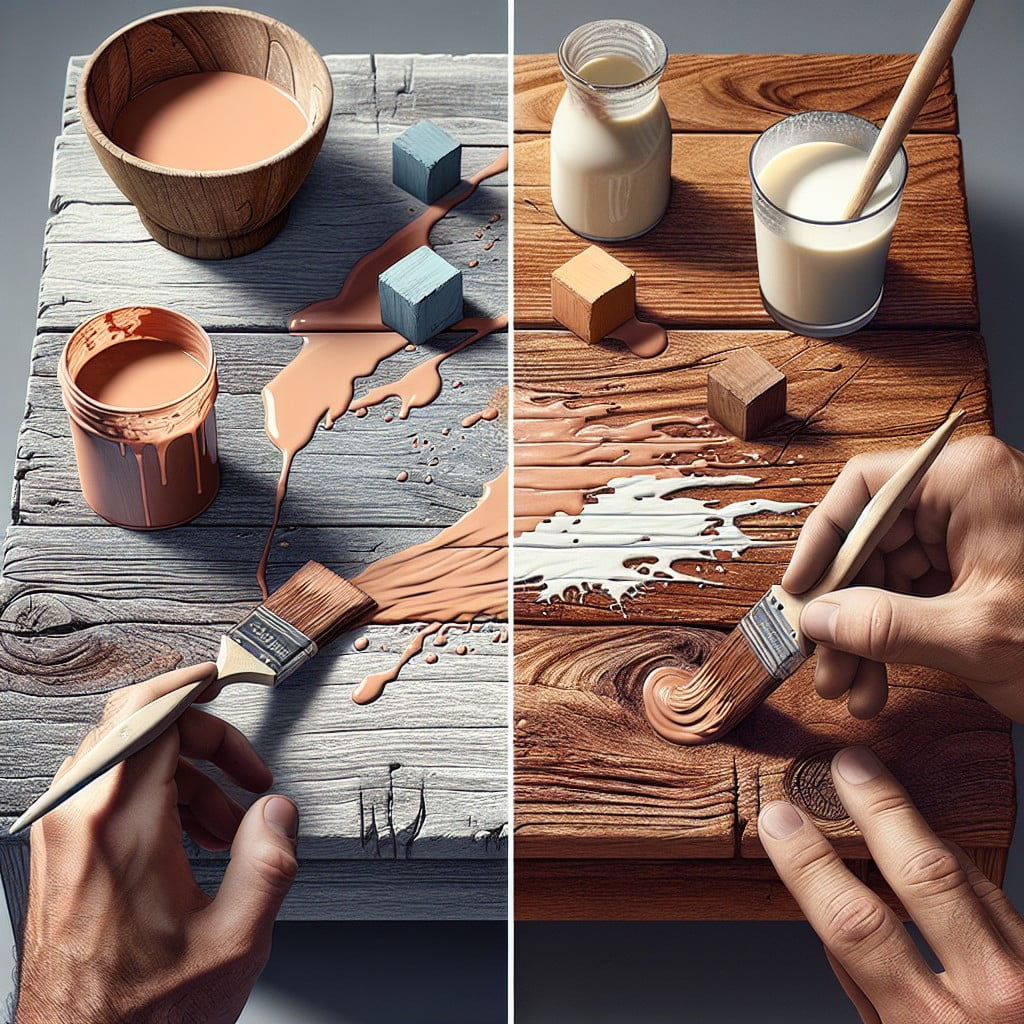
When rolling up your sleeves for a painting project, understanding how your chosen paint behaves during application is crucial.
Milk paint, a powder mixed with water before use, is renowned for its organic composition. It spreads on porous surfaces with ease, often requiring a bonding agent for adherence to non-porous surfaces. Its consistency varies depending on the water added, allowing for a range from wash to full-coverage looks.
Chalk paint, conversely, arrives ready to use and is noted for its thick, forgiving nature that rarely necessitates a primer or sanding on most surfaces. With its matte finish, chalk paint provides excellent coverage and can easily be distressed for a vintage vibe. Brushes and rollers glide smoothly with chalk paint, making it an accessible choice for beginners and professionals alike.
A key takeaway for these paints is their quick drying time. Both dry faster than traditional latex or oil paints, letting you add a second coat or complete a project in less time.
A tip: test your paint on a hidden spot or sample board to get a feel for its texture and workability before embarking on the full project. Applying either paint in thin layers will yield the best results.
Milk Paint Vs Chalk Paint Colors
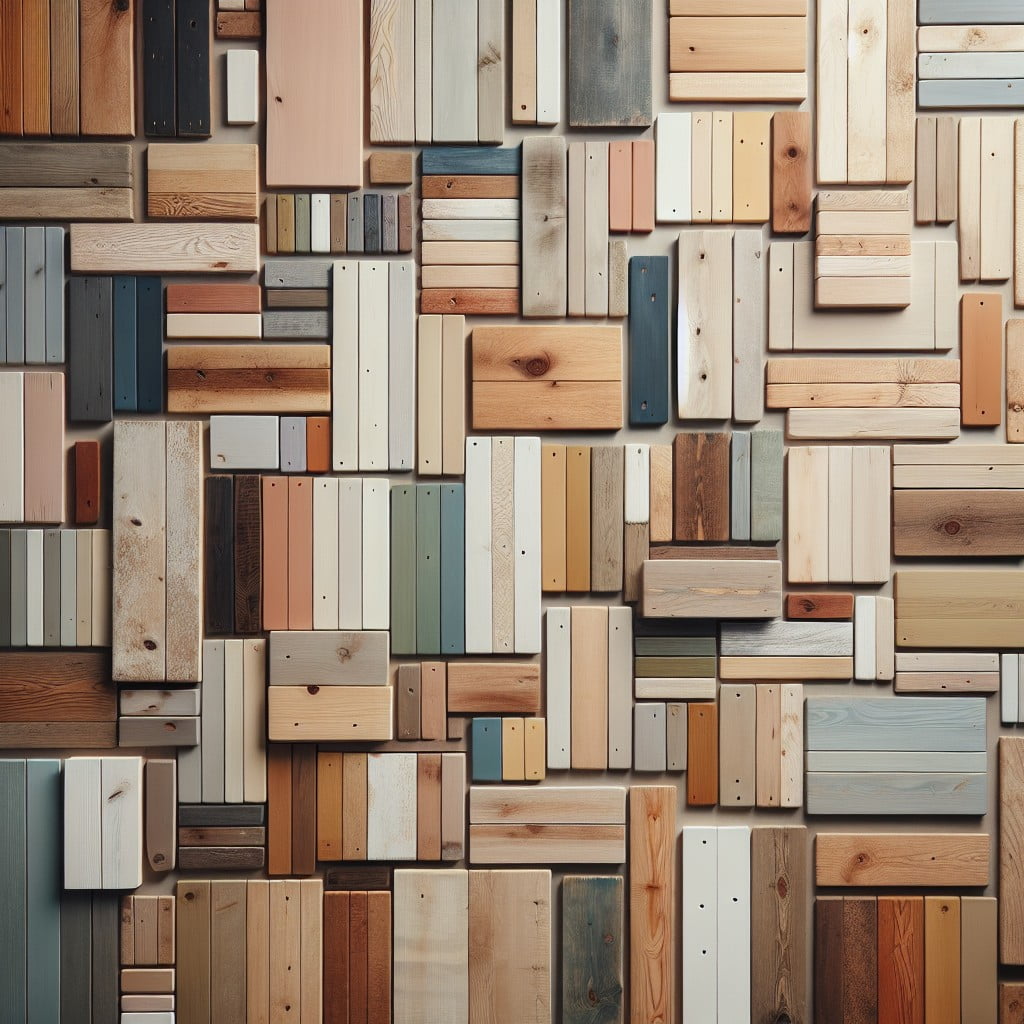
While both milk and chalk paints offer a range of hues, the color palettes they provide differ significantly. Milk paint, known for its organic composition, presents a vibrant spectrum with an earthy aesthetic, often resulting in a more translucent finish that can give furniture and walls a time-worn look. This translucency allows the natural grain of wood surfaces to show through, providing an authentic, antique appearance that’s particularly appealing for restoration projects or achieving a rustic vibe.
On the other hand, chalk paint is renowned for its matte, velvety finish and tends to come in more muted, pastel tones. The colors are more consistent and opaque, which can help in covering imperfections easily and offering a more uniform appearance. Chalk paint’s rich pigmentation is excellent for those looking to achieve a chic, vintage flair or a modern country style with their decor.
For those eager to dive into a broader color palette, milk paint may require mixing pigments to land the desired shade, embodying the spirit of traditional paint-making. Chalk paint, however, offers the convenience of pre-mixed containers, making it a straightforward option for hobbyists and professionals alike who value time and ease of use.
How Milk Paint and Chalk Paint Differ
Milk paint and chalk paint offer unique characteristics that cater to different crafting and restoration projects:
- Composition: Milk paint is a water-based paint made from simple ingredients like milk protein (casein), lime, and natural pigments. In contrast, chalk paint has a calcium carbonate (chalk) base that gives it a velvety, matte finish.
- Texture: Chalk paint is known for its thick consistency which allows for minimal surface prep, while milk paint has a more watery consistency that can be controlled for either a solid or washed look.
- Mixing: Unlike pre-mixed chalk paint, milk paint often comes in powder form, requiring mixing before use. This offers the flexibility to adjust thickness and color intensity.
- Finish and Distress: Milk paint provides a naturally chippy, antique finish, ideal for vintage enthusiasts. Chalk paint, on the other hand, sands smoothly, perfect for a more polished distress.
Understanding the distinctive attributes of these paints ensures the right choice for refurbishing furniture or creating that perfect, rustic aesthetic.
What Milk Paint Is
Originating from natural ingredients, milk paint is a powder-based paint composed primarily of casein, a protein found in milk, along with lime and pigments derived from minerals or plants.
This eco-friendly option has been used for centuries, known for its distinctive matte finish and the ability to penetrate and bond with porous surfaces like wood and plaster.
Its powdered form allows for a long shelf life and customization of consistency depending on the mixture with water.
Milk paint is renowned for its versatility, as it can be left opaque or be diluted for a washed effect, making it a preferred choice for antique furniture restoration or achieving a vintage look on various crafting projects.
It is also biodegradable and virtually odorless, underscoring its appeal for users who prioritize sustainability and health while engaging in their creative endeavors.
What Chalk Paint Is
Chalk paint, distinguished by its velvety, matte finish, is a decorative paint known for its versatility and ease of use. It adheres to surfaces without requiring labor-intensive prep work, such as sanding or priming, making it a favorite among DIY enthusiasts.
This type of paint typically consists of calcium carbonate (chalk), talc, and pigments mixed with a water-based binder. The paint’s unique composition allows it to create a distressed look, popular in shabby chic and vintage decor styles.
Although it can be sealed with wax or sealant for added durability, chalk paint remains best for low-traffic areas or furniture pieces due to its delicate nature. Its thick consistency means a little goes a long way, which is ideal for covering imperfections or achieving a textured appearance with brush strokes.
SUITABLE USES FOR MILK PAINT AND CHALK PAINT
Milk paint, known for its natural ingredients and matte finish, is ideal for vintage furniture or distressed looks. Its ability to adhere to porous surfaces makes it suitable for raw wood or projects intended to have an antique aesthetic. It’s also preferred for those seeking an environmentally friendly option, given its low VOC content.
On the other hand, chalk paint adheres well to a variety of surfaces without the need for priming or sanding, making it a go-to for quick and easy makeovers. It works beautifully on cabinets, walls, and decorative items, providing a smooth, velvety finish that can be waxed or sealed for additional durability. Chalk paint’s versatility extends to layering and creating textured effects, offering a wide range of decorative possibilities.
COMPARING PREPARATION METHODS
Before delving into your painting project, understanding the prep work required for each paint type is key.
Chalk paint boasts minimal preparation; often, it requires no sanding or priming and adheres well to most surfaces, even with existing finishes. This paint’s forgiving nature makes it a favorite for DIY enthusiasts looking to quickly refresh furniture or décor.
In contrast, milk paint, with its more organic composition, may require a bonding agent for non-porous surfaces to ensure adherence. If you’re working with a new, untreated surface, a milk paint application commonly necessitates a light sanding. However, the extra effort pays off for those seeking an authentically distressed or antique look, as milk paint is known for its ability to create a chippy, aged finish when applied without a bonding agent.
APPLYING CHALK AND MILK PAINTS
Both chalk and milk paints have unique properties that affect how they are applied to surfaces.
Chalk paint is renowned for its minimal prep work. It adheres well to most surfaces without the need for sanding or priming, making it ideal for a quick refresh of furniture pieces. The paint’s thick consistency provides excellent coverage, often requiring fewer coats than traditional paints. However, it’s crucial to apply thin layers to avoid brush strokes and drips, allowing each layer to dry thoroughly before applying the next.
Milk paint, on the other hand, comes in a powdered form and requires mixing with water before use, allowing you to control the paint’s consistency. It’s naturally thinner than chalk paint which can result in a more authentic, textured finish that’s perfect for a distressed or antique look. Unlike its counterpart, milk paint soaks into raw wood, creating a durable bond, but it may require a primer or a bonding agent when applied to nonporous or previously finished surfaces.
For both types, using the appropriate brushes is key to a smooth finish – natural bristles for chalk paint and synthetic brushes for milk paint work best. When aiming for a sleek, modern finish with milk paint, consider sanding the surface after the first coat once it’s dry to reduce brush marks.
Always finish with a protective topcoat. Chalk paint requires a wax or sealant to protect its porous surface, while milk paint finishes are inherently more durable but may also benefit from a topcoat, especially on high-traffic items.
Remember, practicing on a small test area first can help you get a feel for the paint and refine your application technique before tackling a larger project.
SAFETY AND ENVIRONMENTAL IMPACTS OF CHALK AND MILK PAINTS
Both milk and chalk paints are celebrated for their eco-friendly attributes, but they have key differences in safety and environmental impact.
Milk paint is renowned for its natural composition. It’s a water-based paint made from milk protein, lime, and natural pigments, resulting in a biodegradable mixture that emits low or no volatile organic compounds (VOCs). Its powdery form prior to mixing also means reduced shipping weight and packaging.
Chalk paint, on the other hand, is a water-based formula that contains natural pigments and typically has low VOC levels. However, it is not as natural as milk paint, often containing additional binders and resins that are synthetic. This means it’s slightly less environmentally friendly but still a better choice compared to high-VOC options like oil-based paints.
When considering safety for indoor use, both types are generally non-toxic and safe for use on children’s furniture and walls, provided the paints are properly sealed. Proper ventilation during the painting process is recommended for both. Dispose of any leftover paint according to your local waste management guidelines to minimize environmental impact.
CHALK AND MILK PAINT DURABILITY
When assessing the longevity of these paints, it’s important to note that both can last for years if properly sealed and maintained. Chalk paint typically has a matte finish and requires a wax or sealant to protect it from wear and tear. This extra layer not only enhances durability but also accentuates the rich textures achievable with chalk paint.
On the other hand, milk paint, known for its naturally durable, chippy look, gains strength over time as it absorbs into the wood. For added protection, it can be finished with a variety of topcoats, from oils to acrylic-based sealers. While both paints can withstand the rigors of daily use, their durability is highly dependent on the finishing process and the level of care given to the surfaces after painting.
Regular maintenance, including reapplication of sealants as needed, will ensure the longevity of both milk and chalk paint finishes.
Milk Paint, Chalk Paint, and the Test of Time
Durability is a vital factor to consider when choosing a paint. Milk paint is known for its long-lasting finish which, when properly sealed, can endure for years without chipping or fading. This ancient medium has proven its resilience on antique furniture, a testament to its ability to stand the test of time.
Chalk paint, while requiring minimal surface preparation, may not boast the same longevity unless it is properly sealed with wax or a finishing coat. Once sealed, it can also last for years, preserving the matte, velvety finish it’s lauded for.
Both types of paint develop a patina over time, adding character to the piece that many find appealing. In high-traffic areas or on frequently used furniture, topcoats or sealants will significantly extend the life of both milk and chalk paints. Regular maintenance and touch-ups can further enhance their durability, ensuring that the beauty of the painted surface continues to shine through daily use and wear.
What Surfaces Can You Apply Chalk and Milk Paint?
Both chalk paint and milk paint adhere well to a variety of surfaces, enabling a broad spectrum of creative projects. They can be applied to:
- Wood: Ideal for furniture, trim, or cabinetry, regardless of whether it’s raw or previously finished.
- Metal: Great for giving new life to metal fixtures or hardware, provided the surface is clean and rust-free.
- Glass: With proper prep, such as light sanding for better adhesion, both paints can be used on glass items.
- Fabric: Milk paint in particular, when mixed to a more watery consistency, can be used to dye fabric.
- Masonry: Chalk paint is particularly effective on brick and stone for a distressed or vintage look.
- Drywall and Plaster: Both paints can cover walls; however, milk paint requires a bonding agent for nonporous surfaces.
It’s important to note that milk paint often needs a bonding agent to adhere to non-porous surfaces, while chalk paint typically does not. Always ensure the surface is clean and dust-free before applying either type of paint.
Prep
Before starting your painting project, the level of preparation required varies with the paint choice:
1. Surface Cleaning – Regardless of the paint type, ensure that the surface is clean. Wipe away any dust, dirt, or grime with a damp cloth and allow the surface to dry thoroughly.
2. Sanding – Chalk paint adheres well to most surfaces with minimal sanding needed. However, for glossy or very smooth finishes, a light sanding helps to create a better bond. Milk paint, conversely, adheres best to porous surfaces. If you’re working with a non-porous surface, sanding is essential or a milk paint bond coat will be needed.
3. Priming – Chalk paint typically does not require a primer unless you’re working with a surface that is prone to bleed-through such as mahogany or cherry wood. Milk paint may need a bonding agent mixed into the first coat when used on non-porous surfaces to ensure proper adhesion.
4. Mixing Milk Paint – If using milk paint in its traditional powdered form, it must be mixed with water. This step is crucial for consistency and color. Chalk paint, ready-to-use, eliminates the mixing step and allows for immediate application.
5. Testing – As both paints can have varied results depending on the material, it’s advisable to test on a small, inconspicuous area first. This step ensures the adhesion, color, and finish meet your expectations before committing to the entire piece.
By following these preparation guidelines, you create a solid foundation for a smooth painting process and ensure a finish that lasts.
FAQ
What is better milk paint or chalk paint?
Chalk paints, though requiring more work during the finishing process, are generally more favorable due to their no-preparation feature, while milk paints are more preferred for creative effects, retaining brushstrokes for a more rustic result.
What are the disadvantages of milk paint?
The primary disadvantages of milk paint include its short shelf-life post mixing as it’s not designed for long-term storage and its suitability primarily for small-scale projects versus larger ones.
Why would you use milk paint?
Milk paint is used because it provides rich colors and a unique, flat, chalky or chippy finish, making it ideal for historical restoration, reproduction, and furniture makeover or upcycling projects.
Does milk paint scratch easily?
When applied correctly, milk paint does not chip, flake, or scratch easily.
How does the cost of milk paint compare to chalk paint?
Milk paint typically costs less than chalk paint, although prices can vary depending on the brand and quality.
What unique applications are most suitable for chalk paint?
Most suitable applications for chalk paint include refurbishing furniture, creating vintage distressed looks, crafting, interior wall decoration, and making chalkboards.
Are there specific surface materials where milk paint is preferred?
Milk paint is particularly preferred on raw wood and other porous surfaces due to its penetrating qualities.
Recap:
